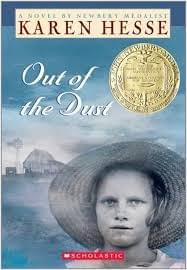Teaching the Great Depression to your 7th and 8th grade students can be challenging, particularly when they don't have the necessary background to understand the economic forces at work – trade, supply & demand, circulation and growth of the money supply, how banks work, inflation and deflation, etc. These are Social Studies 8th grade CC Standards, C8.PO1-2.
Hook them with a Trade Simulation:
I used the Case Study: The International Trade Game. The lesson plan and materials for this simulation are on pages 38-45 of the Economics Academy 101 Guide, by Western Reserve Public Media. Students LOVED this simulation and writing about it afterward. Your classroom will be a complete disaster of tiny pieces of paper afterward, but it is well worth it! The next day, they write about what they learned. This is an expectation-setting exercise, as well, because they will write about every simulation they do.
Introduce Specific Economic Concepts:
I adapted several the U.S. Federal Reserve of St. Louis and Kansas City lessons meant for high school students to a level my middle school students enjoyed.
Students loved these lessons, taught via simulations, and they were always excited to write about them afterward.
1. The Inflation Auction requires you buy several large chocolate bars, per class, to auction off. If your school doesn't allow sweets, you can use anything that will stimulate students to bid (using your fake money) outrageously. I increased the money supply for each auction, handing out more and more money each time, until bids were totally outrageous. Allow students to band together to pool resources and bid against each other, as long as the chocolate bar is then divided into the same number of pieces as there are people in the contribution pool. In some classes, I had them do a cost-per-ounce calculation, before they were allowed to eat, and they quickly realized the first round bid winner got the best price for the most chocolate. Not all classes banded together. Some remained staunchly independent when bidding. This was by far one of the more interesting and exciting economic simulations we did in class.
2. The Money Mania lesson simulates how money "grows" through bank lending, including the money multiplier effect. You need the exact number of groups for the calculations to work. Students can pair up, if you have too many students. If you don't have that many students, I would skip this one and find something else to demonstrate this concept -- the task cards won't add up.
3. The Bank Run Simulation lesson simulates a bank shut-down, after they've learned how banks loan money and don't necessarily -- without government regulation -- have the deposits necessary to cover sudden, sustained withdrawal of deposits. Students loved this lesson, as well.
NOTE: You will have to print or buy a sizeable supply of “fake” money to successfully execute these lessons, especially the trade simulation, but the small investment is well worth it. The bills are used multiple times. I printed my own and laminated them, in denominations up to $500s.
4. After building this background knowledge, students watched excerpts of Ken Burns’ Dust Bowl documentary and I used The Great Plow Up -- Economics of the Dust Bowl lesson plans and graphic organizers from PBS.
Students were quickly able to connect how farmers had taken out loans to plow more acres, were unable to pay when drought set in and killed crops, and how the money supply contracted when banks began calling in their loans.
5. To end the unit, I bought class copies and the audio of this excellent book. It only took about two weeks to complete reading / listening in class, for about 15-20 minutes each day, so it was a great end-of-quarter wrap up that synthesizes the concepts introduced earlier. It's written in free verse, and, depending on how you teach it, can satisfy some 8th ELA CC standards for poetry, as well.

There are numerous, excellent, commercially available reading guides for it. Most are fantastic, but my students used this free Guided Reading Journal from the Library of Congress. It brought everything together. The book's free verse format was accessible for even my most challenged readers. Students were proud when then they identified the economic factors at work in the story.
